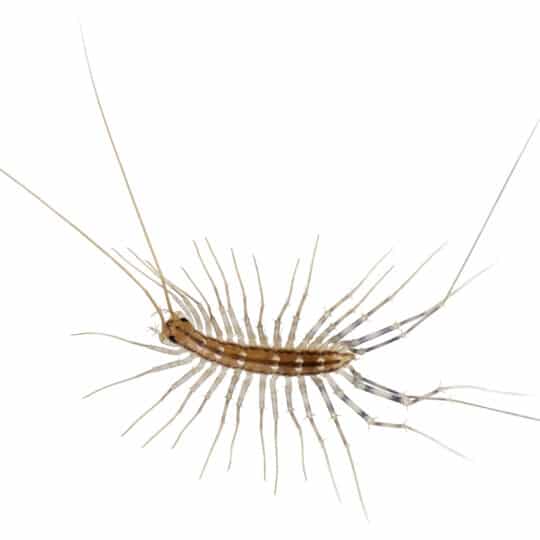How to Safely Catch House Centipedes and Place Them Outside

One of the most terrifying looking pests is the house centipede. These pests are enormous, with extremely long legs that move very fast. They are unsettling to look at and capable of very quick, erratic movements.
But they are also, arguably, the single best form of natural pest control that exists today.
Technically, spiders eat more bugs than house centipedes, which is kind of incredible when you think about how small spiders are. But what house centipedes eat tends to matter more to homeowners. They feed on spiders, cockroaches, and ants, and they are also one of the few pests that eat bed bugs as well.
If you are going to try to save any one type of insect on your property, one of the best to save is the house centipede. But you have to be able to relocate it without causing it harm, and that can be difficult to do.
Tools to Catch and Remove a House Centipede
There are a few “spider catcher” tools that someone can purchase that are capable of grabbing and moving house centipedes, but many are ineffective, so the best approach is typically the old fashioned approach of catching them and putting them outside. The best way to do that is with:
- Clear Plastic or Glass Container – You’ll want to use a large and clear container so that you can both catch its big legs without hurting it, and also make sure you can see where it is hiding.
- Thin Hard Paper – Some type of thin cardboard is going to be useful. You can use paper too, but something like construction paper will hold its shape better than printer paper, and the better it holds its shape, the easier it is to do.
- Gloves (Optional) – If you’re not a huge fan of touching these things, you’ll probably want to wear gloves to make it a little bit easier on you.
- Broom (Optional) – If the house centipede is in the corner of a room, it can be very hard to catch. A broom can help you move it towards the center of the room where it’s easier.
Once you have prepared all of your tools, the process for removing the house centipede safely is pretty straight forward. First, when you can, place the glass/plastic container over the centipede so that it is trapped inside. As mentioned, you might have to first move it with the broom. Capture the centipede and make sure you can see where it is so that you can safely do the next step.
Next, lift the container only about a millimeter or so high and slide the paper/board underneath the container. Go slowly so the house centipede moves atop the paper as well, and so that you can avoid crushing its legs.
If the paper is solid enough, that might be enough. You can hold the paper with the container on top and then take the house centipede outside, away from the property. If the paper is a bit flimsy, you may feel uncomfortable walking the paper and the container outdoors, in which case the best thing you can do is flip the paper and container over. This will make it easier to hold the paper on top of the container while the house centipede hangs out in the glass.
Now take the centipede outside, find a space a good 10+ feet from the property, ideally near some bushes/brush, and then open the container and let the centipede out, closer to the ground. It should run off fairly quickly and find a new place to live.
House Centipede Prevention
That is going to be the best way to get a centipede out of your property. But it would of course be better to never have a centipede on your property in the first place.
All pests – including centipedes – are prevented with pest control. But pests with long legs that can walk on walls, like spiders and house centipedes, are capable of coming into a property without coming into contact with pesticides and related treatments. That is why you want to consider making your home less hospitable for pests, through processes such as:
- Reduce Moisture Levels – Lower humidity in bathrooms, basements, and kitchens by using dehumidifiers or fans. Repair any leaky pipes, and wipe up excess water.
- Seal Entry Points – Check for small cracks around doors, windows, and baseboards. Use caulk or weather-stripping to seal gaps where centipedes and other insects may enter.
- Limit Clutter – Keep storage areas organized and reduce clutter where centipedes may hide. Consider storing items in sealed containers rather than cardboard boxes.
- Regular Cleaning – Routine vacuuming and dusting eliminate potential hiding spots and reduce the food supply for centipedes by controlling other insect populations.
However, the single best thing you can do to prevent house centipedes is pest control for other pests. The fewer pests there are on your property, the less house centipedes want to visit, which means that you’re less likely to struggle with them.
For that, you need comprehensive pest control from ExtermPRO. We offer the best rates, family-operated service, and we service most of the Northern Virginia community starting with Gainesville and moving as far out as Fairfax. If you’re ready to get started, contact ExtermPRO, today.